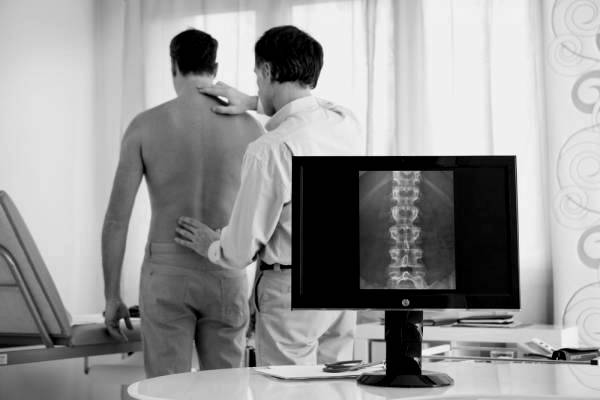Do you have tight hamstrings? Conventional wisdom says that to fix them, you just need to stretch. When that doesn’t work, just try to stretch some more. After all, if something is tight, you need to be more flexible and have better mobility.
Using the word “tight” to describe an injury means almost nothing and doesn’t allow us to know what is going on. But that doesn’t stop all types of practitioners from labeling their clients with a tight x, y, or z.
“Stretching” and “mobility” have become the universal prescription for anything that feels “tight.” So we default into this mode of feeling guilty for not stretching enough and blame the persistent tightness on our negligence. I watch people subject themselves to this torture all the time, trying to attain the elusive flexibility in their hamstrings as they grimace in agony.
A better approach is to answer the question of why the muscle is tight in the first place. To do so, I use the concepts I learned through my training in the Integrative Diagnosis system that was created by Dr. William Brady.
So what are the real causes of your “tight” hamstrings?
Stretching a tight hamstring can be the exact wrong thing to do.
Nerve Entrapment
Have you experienced any of the following?
- Numbness
- Aching
- Burning
- Tension
If so, then you most likely have had a nerve entrapment. Nerves need to pass through or floss their way between muscles to get to where they need to go. They are usually built with a little extra slack, similar to a rubber band, around 15 percent to allow them to stretch a bit.
Nerves can get entrapped in 156 places in the body. When you have a bunch of adhesion, it can cause the nerve to literally get glued to the surrounding muscle. Then when you try to move the area, it creates a ton of tension and leads to an increase in a stretch feeling because all the slack gets used up quickly.
So what does this have to do with your hamstrings being tight? If your nerve is being compromised and squeezed on by an adhesion, it will cause your hamstring to engage in what is called protective tension. When this happens, your hamstring will feel very “tight” and will not respond well to stretching mechanisms.
How do you know if you have this issue?
- Stand with your feet about shoulder-width apart and knees relatively straight.
- Bend down and touch the ground (if you can.) You should be able to easily touch the ground. If you can’t, there is an increased chance that you have nerve entrapment.
- If you feel the stretch primarily behind the knees or especially in the calf muscle, then you are a slam-dunk candidate for this entrapment.
When you are bending down you are not changing the angle of the ankle, so no “stretch” should be felt in the calf. What you are actually feeling is the nerve being tugged, and the weakest branch of the nerve (tibial portion) is being stretched.
The next time you are stretching your hamstrings and feel a sharp “pull,” please stop immediately. All you are doing is causing more damage to the nerve. Get to a soft tissue specialist who can focus on removing the adhesion gradually with their hands. The treatment shouldn’t be excruciating. And please stop jamming lacrosse balls into nerves. Nerves are sensitive and they don’t appreciate being crushed by a hard ball.
Lumbar Disc Injury
If you frequently experience pain in your hamstrings, ask yourself these questions:
- Is the hamstring pain worse in the morning when you get out of bed?
- Does it hurt worse with sitting?
- Do you have any numbness or tingling down the leg?
- Is your back extra beat up after squatting or deadlifting?
- Do you ever feel sharp or stabbing pain in your low back?
- After sitting for a long time do you experience increased pain when trying to stand up?
If any of these are positive, there is a good chance that you have some type of injury to the lumbar disc. When you have damage to your disc, the hamstrings respond with what was mentioned above, a protective tightness. This is the body’s way of keeping the disc from getting any further damaged, sort of like hitting the brakes. All the surrounding muscles sacrifice their normal functions to unload the lumbar disc, which leads to a feeling of chronic “tightness” in the hamstrings.

Diagnostic imaging alone isn’t enough to diagnose a disc injury. A full examination is also required.
So how do you know you have a disc injury? One simple way is to obtain an MRI, but even that isn’t foolproof. In many cases, radiologists will downplay what they see or in some cases flat out miss some things. They are always looking for big, bad, scary stuff that could lead to a consult with a surgeon, so they often disregard minor bulging.
So don’t solely rely on the MRI. Proper diagnosis involves a thorough history, exam, and imaging. If someone tries to tell you that you have a disc injury solely on an X-ray, that person is delusional. X-rays do not show soft tissue, just bone.
There are many doctors out there who will say that some minor bulging isn’t a big deal and everyone has it. I humbly disagree. Any damage to a disc is a big deal in my clinic. The spinal cord and nervous system are the most important parts of your body. If they get damaged and don’t work correctly, then you don’t either.
If you discover you do have a disc issue, I’ll tell you what not to do: any of the corrective mechanisms that try to fix the inhibition by getting your hamstrings to relax. The hamstrings are tightening up for a reason. If you allow them to relax for a window of time, it can actually cause even more damage to a disc injury.
Find the Root Cause Before Attempting a Fix
There is a lot of confusion on the causes of tight hamstrings. People often engage in an obligatory stretch routine to eliminate the issue, without knowing what the true problem is.
Your body is a complex and intricate system that deserves to feel and function at its optimal level. If you are trying to work through “tight” hamstrings simply by stretching them, chances are they’ll only get tighter. You owe it to your body to get properly assessed, diagnosed, and treated.
More Tips for Tight Hams:
- Can’t Touch Your Toes? Find and Fix the Root of the Problem
- Will Static Stretching Make You a Better Runner?
- Foam Roller vs. PNF Purgatory: Which One Will Save You?
- New on Pulse Beat Fit Today
Photo 1courtesy of Wikimedia Commons.
Photo 2 courtesy of Shutterstock.






